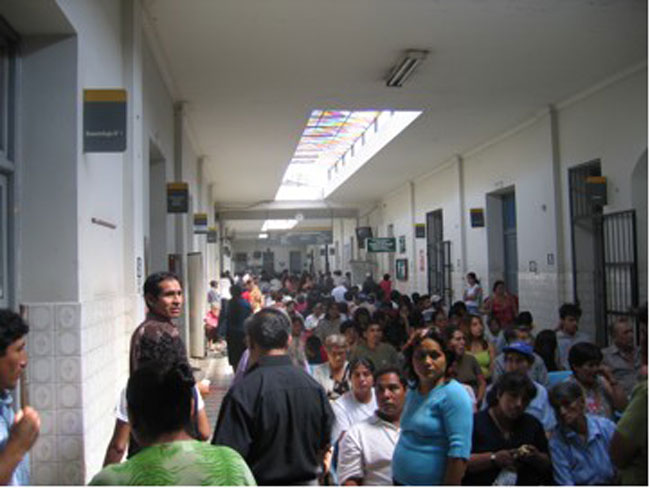Study: Hospitals Should Open Windows to Curb Disease

Simply opening windows and doors could help prevent the airborne spread of germs inside hospitals, medical researchers now report.
Airborne contagions can prove deadly, with tuberculosis alone killing 1.8 million people worldwide annually. The greatest risk for outbreaks of airborne contagions perhaps lies in hospitals, which concentrate infected patients and potential victims in close indoor quarters.
Modern care for tuberculosis patients entails isolating them from others and employing mechanical ventilation systems that replace all the air in these isolation wards roughly every five minutes to prevent a buildup of germs. The ventilation systems for such wards should also generate "negative pressure," meaning that air should flow into these rooms whenever a door is opened, "so that contaminated air inside the ward doesn't escape," explained infectious diseases physician Rod Escombe at Imperial College London.
Mechanically ventilated negative-pressure respiratory isolation rooms are expensive to install and maintain, "and if they're not maintained properly, they go downhill quickly," Escombe said.
Escombe and his colleagues found that natural ventilation from just opening windows and doors could replace air in rooms more than twice as quickly as mechanical negative-pressure ventilation systems.
"Natural ventilation can offer enormous rates of air exchange for relatively little cost," he told LiveScience.
Escombe's first hint of these findings came after experiments he did in Peru that placed guinea pigs on hospital roofs. The idea there was to investigate guinea pig infection rates upon exposure to tuberculosis-contaminated air from tuberculosis wards and to see whether commercial ultraviolet light or negative air ionization purifiers might cut infection levels.
Get the world’s most fascinating discoveries delivered straight to your inbox.
"I was examining the ventilation rates from a mechanically ventilated ward and upstairs saw this wonderful old-fashioned ward from the '40s, with its enormous windows and high ceilings, and wondered what the ventilation rate there was," he recalled.
The researchers compared the airflow in 70 naturally ventilated rooms in eight hospitals in Peru, including areas where the potential risk of airborne contagion spread was high, such as waiting areas, emergency departments and tuberculosis wards. They also looked at 12 mechanically ventilated negative-pressure respiratory isolation rooms built after 2000.
Natural ventilation exceeded mechanical ventilation even at the lowest wind speeds. Natural ventilation was highest in the five hospitals that were built before 1950, which featured wards with high ceilings and large windows.
The researchers' mathematical models of airborne infection, based on the ventilation comparisons, estimated that in mechanically ventilated rooms, 39 percent of vulnerable people would become infected following 24 hours of exposure to untreated tuberculosis patients. On the other hand, only 11 percent would become infected in naturally ventilated pre-1950s facilities.
"An obvious criticism of natural ventilation is that it's not suitable for cold climates," Escombe noted. "Fortunately, in this case, most tuberculosis is in tropical or temperate climates, so natural ventilation could have an important impact on TB control."
Escombe said he now provides assistance on a Global Fund project to help reduce hospital transmission of tuberculosis by improving natural ventilation in 18 different Peruvian hospitals. "It's exciting to translate these findings into practice so quickly," he said.
"Still, in Eastern Europe and parts of the old Soviet Union, there are high rates of tuberculosis, and the potential for natural ventilation is limited, especially in winter," Escombe added. "However, in temperate climates I'd argue that if I were a patient or nurse, I'd rather be working in a breezy, naturally ventilated ward with extra blankets and a cardigan than in a stuffy centrally heated ward where I might catch drug-resistant TB or other airborne infections."
Escombe and his colleagues detailed their findings Feb. 26 in the journal PLoS Medicine.



